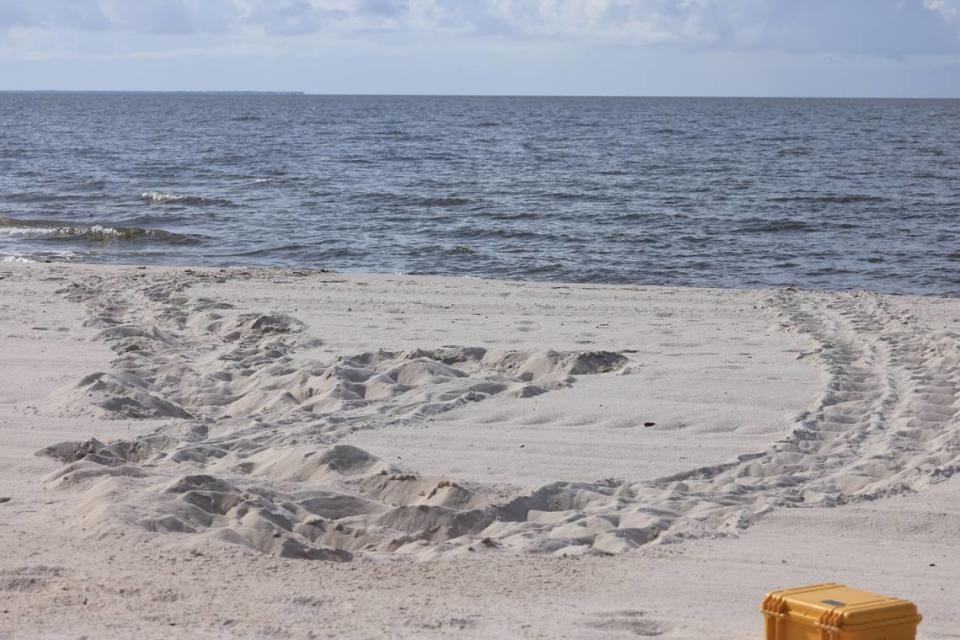Sea turtle nest found in Pass Christian, Mississippi, for first time since 2018
For the first time since 2018, a sea turtle nest has been found on the Mississippi coast mainland.
The nest was reported to the Institute for Marine Mammal Studies (IMMS) on Monday by Harrison County Sand Beach crews when they spotted sea turtle tracks east of the Pass Christian harbor while cleaning the beach.
IMMS staff investigated the site and confirmed the presence of a nest. They placed a 20-foot perimeter and stakes directly around the nest to protect the eggs from beach equipment and the public.

The last known sea turtle nest on the mainland was in Gulfport in 2018. Since then there have been reports of infrequent nesting on the barrier islands, Cat Island and Ship Island, but since the islands are uninhabited, there is not an accurate account of the number of nests.
Moby Solangi, president and executive director of IMMS, said the eggs likely belong to a loggerhead sea turtle, which is a protected species that can be found along the Gulf Coast in Alabama or Florida, or a Kemp’s ridley sea turtle, which is the most critically endangered species of sea turtle. The species of turtle will not be known until the eggs hatch.
Solangi said the sea turtle offspring only will have a 1 in 10,000 chance of reaching adulthood, so it’s important the eggs are monitored and protected. The sea turtle eggs will incubate for about 50-60 days, and there could be between 60-100 eggs in a sea turtle nest. Sea turtles will also typically lay multiple nests in their breeding season.
“This is a very important environmental happening on the coast,” Solangi said, “After all the environmental disasters we’ve had, this is a good sign. When (turtle populations) have gone down, it means the ecosystem that supports them is having difficulty. When animals start breeding, it means things have started to get better.”
The Mississippi Sound and the Gulf of Mexico is an important habitat for sea turtles because it is a warm, safe climate for breeding but Solangi says the BP oil spill in 2010 and the opening of the Bonnet Carré Spillway in 2019 negatively impacted sea turtle populations in Mississippi.
IMMS will continue to monitor the eggs until after they hatch. IMMS previously helped rehabilitate stranded and cold-stunned Kemp’s ridley sea turtles and released them back into the Mississippi sound.
IMMS asks that the public not disturb the nest and encourages the public to call IMMS’ rescue and rehabilitation hotline at 1(888) SOS-DOLPHIN if they find tracks or a nest.
Theresa Madrigal, stranding coordinator at IMMS, noted sea turtle tracks can look similar to beach equipment tracks, but “are about 3-4 feet wide and usually come up from the water and lead back to the water.” She also said that, depending on the type of turtle, the nests are generally found between March and August.


